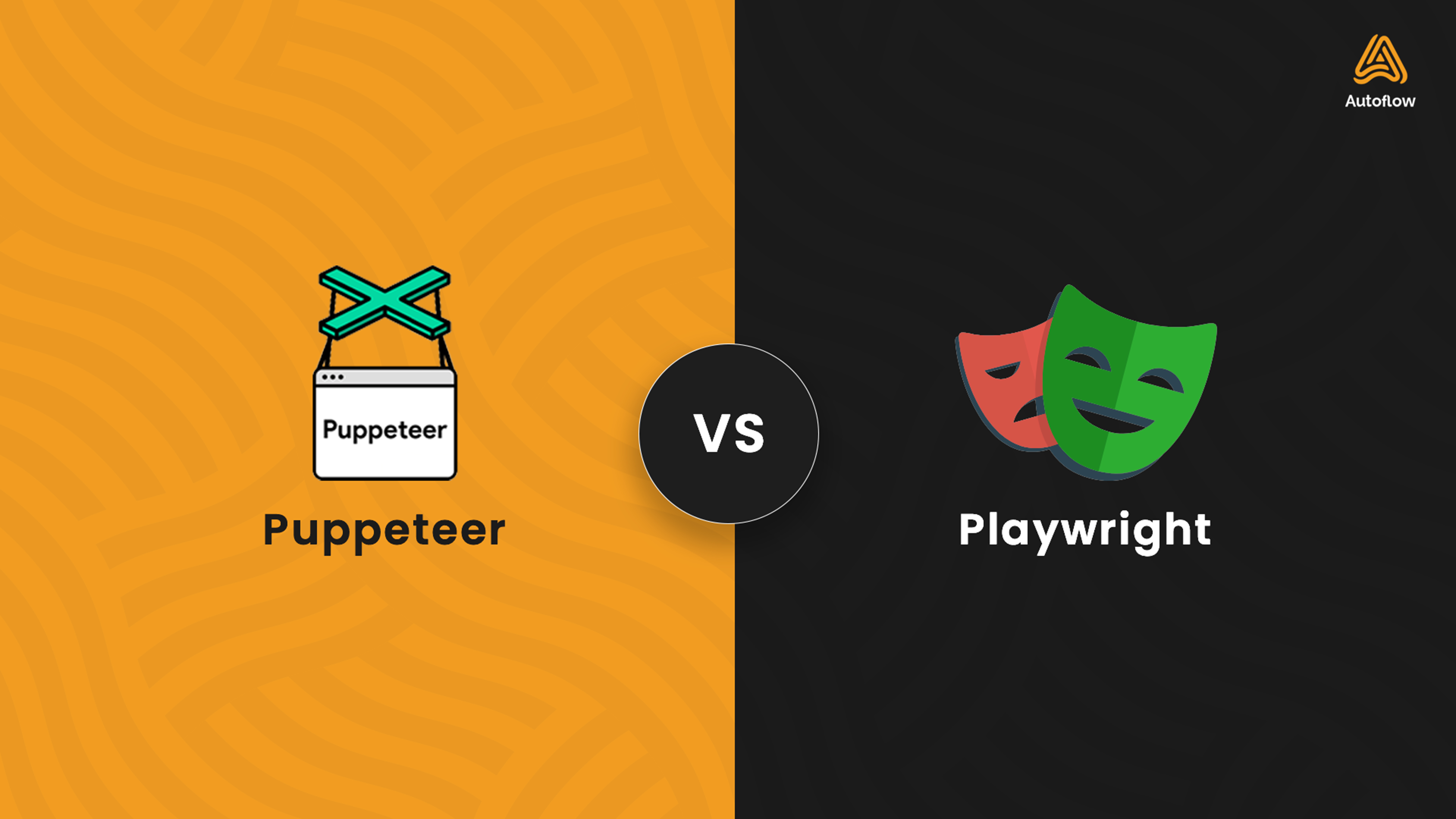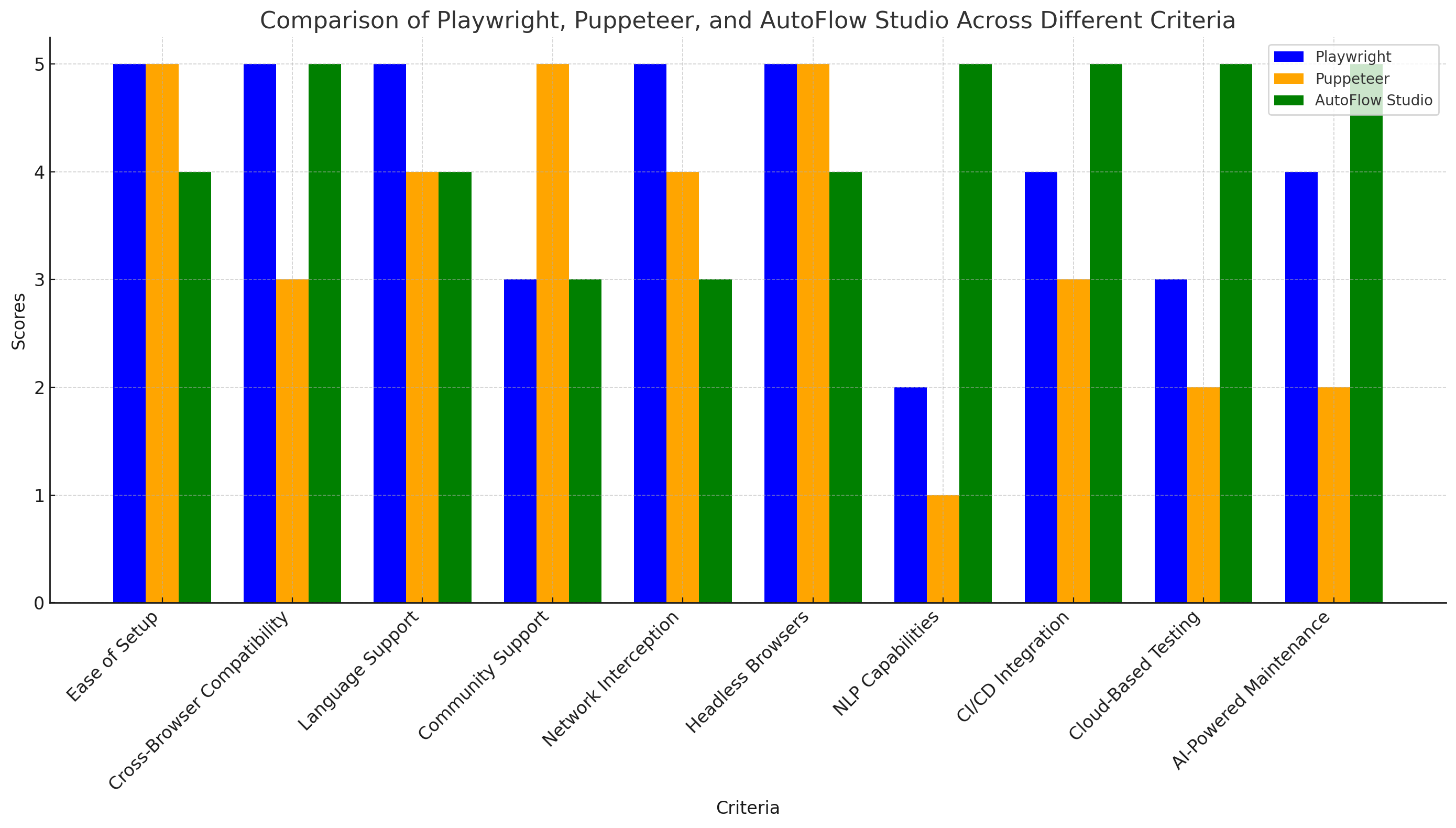5 min to read
Puppeteer Vs Playwright: The Right Choice for Navigating the Web Automation Landscape in 2024

 Introduction to Web Browser Automation
Introduction to Web Browser Automation
With websites becoming more complex, layered, and function-driven, developers face significant challenges in creating better websites within tighter deadlines.
Hence, browser automation enables faster, more accurate testing of web application requirements. Browser automation is the procedure of testing software in a web browser, leveraging automated solutions while reducing overall testing efforts and obtaining faster outcomes.
The first step towards browser automation is choosing a suitable framework. Many popular tools, such as Selenium, Cypress, Playwright, Puppeteer, etc., lead in browser automation-specific tasks, each with its own features and ecosystems. However, the comparison between Playwright and Puppeteer hogs the limelight due to their flexibility.
Let’s understand the basics, head-to-head comparison, advantages, and limitations of Playwright and Puppeteer.
 Puppeteer vs Playwright: The Benchmark of Cross-Browser Automation
Puppeteer vs Playwright: The Benchmark of Cross-Browser Automation
The choice between Playwright and Puppeteer has remained the focus of discussion regarding browser automation. While Playwright is a Microsoft offering, Puppeteer is Chromium-centric and backed by Google. Both automation frameworks are open-source Node.js libraries that extend cross-browser capabilities.
Let’s examine both libraries individually and assess them based on browser support, API design, community support, and web scraping capabilities.
 Puppeteer
Puppeteer
Puppeteer is a browser-driven framework and Node.js library. Unlike Playwright, it downloads and uses Chrome by default. It is primarily maintained by the Chrome DevTools team. Although its core functionality focuses on the Chrome browser, it also provides limited support for Microsoft Edge and Firefox.
 Playwright
Playwright
Microsoft introduced Playwright in 2020 as an open-source Node.js library that simplifies browser automation for browsers like Firefox, Chromium, and Webkit through a unified API. Although Playwright was initially created to enhance automated UI testing, it has a robust auto-wait feature. This feature makes it proficient at intercepting network activities and executing multi-page scenarios.
Regardless of choices, cross-browser testing remains vital to ensure a consistent web experience across devices and browsers. The key to successful browser automation is making a decision based on a project’s unique needs.
 AutoFlow Studio: A compelling alternative to Playwright and Puppeteer
AutoFlow Studio: A compelling alternative to Playwright and Puppeteer
Playwright and Puppeteer are both robust tools for browser automation. However, a few other tools are proficient in what these frameworks do while improving their limitations. AutoFlow Studio is another prominent automation testing tool that deserves attention and is pips ahead of both the Node.js libraries. It has a host of benefits, as illustrated in the table below.
| Features | Playwright | Puppeteer | AutoFlow Studio |
|---|---|---|---|
| Overview | Open-source Node.js library by Microsoft supporting cross-browser for Chromium, Firefox, and Webkit | Google’s browser automation framework primarily focused on Chrome with limited support for Firefox and Edge | A scriptless automation tool offering robust cross-browser compatibility and AI-powered features |
| Browser Support | Supports Chromium, FireFox, and Webkit, with custom binaries for optimal performance | Focuses primarily on Chrome/Chromium, with limited support for Firefox and Edge | Supports mutiple browsers and devices for comprehensive cross-browser and device testing capabilities |
| Language Support | Supports JavaScript, Python, Java, and C# | Explicitly limited to JavaScript | Utilizes Natural Language Processing (NLP) for tests in understandable language making it accessible to non-technical users, No-code support |
| Merits | Auto-wait functionality simplifies automation, Network interception for efficient mocking and snubbing, Integrates with Jest for streamlined testing | Fast execution of browser automation tasks, Seamless integration with JavaScript Frameworks like Jest, Mocha, and Jasmine, Large active community for support | Scriptless automation approach, AI-powered test maintenance, Integration with CI/CD pipelines, Cloud-based testing for scalability |
| Limitations | Lacks native mobile support, Minimal community support due to being relatively new, Smaller, expanding user base | Limited to Chrome and Chromium for browser support, Restricted to JavaScript for programming languages | Lacks native mobile support |
| Use Case Suitability | Ideal for versatile automation across multiple browser and languages | Best-suited for Chrome-centric web automation projects due to its compatibility with JavaScript testing frameworks | Appropriate for teams needing a user-friendly, scriptless approach to cross browser testing and CI/CD integration with minimal coding effort |
| Unique Selling Proposition | Comprehensive cross-browser support with a unified API for various browsers and platforms | Fast, efficient Chrome automation with extensive community support | Shift-left testing functionalities with NLP and AI-driven maintenance, perfect for non-technical users and cross-functional teams |

 Playwright vs Puppeteer: Concluding remarks
Playwright vs Puppeteer: Concluding remarks
Both Playwright and Puppeteer are spot-on regarding their scope of application, advantages, and the ecosystem they offer to testers and QAs. While Puppeteer is an exciting choice for Chrome-centric web automation due to its simplicity and excellent community support, Playwright’s multi-language support, cross-browser compatibility, and native mobile app testing capability make it the go-to option for versatile automation needs. Your final decision should factor in quantifying the project’s browser necessities, the team’s expertise, and the complexity of testing scenarios.
While Playwright and Puppeteer are both compelling choices for browser automation, AutoFlow Studio presents a user-friendly and scriptless approach to automation. This automation testing tool enables teams to transition to cross-browser testing without extensive coding. The shift-left testing functionalities, AI-driven test maintenance, and NLP capabilities are big pluses that improve AutoFlow Studio’s appeal.
Transition to AutoFlow Studio and discover how to fast-track your test automation requirements effectively. Sign up to learn more with a 30-day trial.


Comments